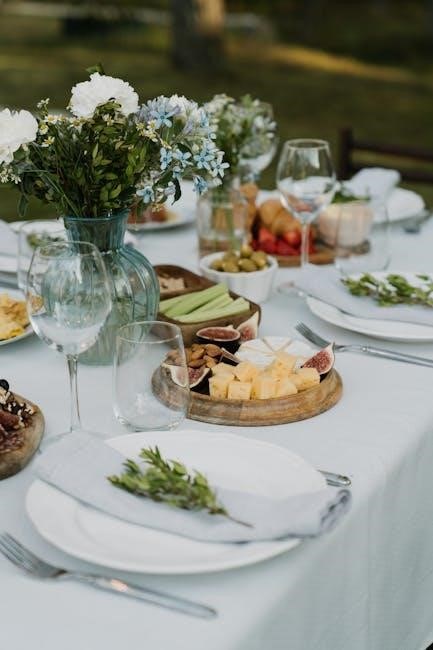Outdoor kitchen plans provide detailed blueprints and guides for creating functional, stylish cooking spaces. These plans often include layouts, materials lists, and step-by-step instructions, helping homeowners design and build their dream outdoor kitchens. With options for DIY projects or professional installations, outdoor kitchen plans make it easier to transform your backyard into an entertainment hub. Downloadable PDFs offer convenience, ensuring you have everything needed to start your project.
1.1 What Are Outdoor Kitchen Plans?
Outdoor kitchen plans are detailed blueprints or guides that outline the design and construction of an outdoor cooking space. They often include layouts, materials lists, and step-by-step instructions, helping homeowners or contractors build functional and stylish kitchens. Available as PDF downloads, these plans provide customizable options for grills, countertops, and storage, ensuring a seamless setup for backyard entertaining.
1.2 Benefits of Having an Outdoor Kitchen
An outdoor kitchen enhances backyard entertaining, expands living spaces, and boosts property value. It allows for seamless cooking and dining alfresco, creating memorable experiences. With proper planning, it can be a functional and stylish extension of your home, perfect for hosting gatherings and enjoying nature while cooking.

Key Considerations Before Designing an Outdoor Kitchen
Assessing space, budget, and location are critical. Ensure functionality, safety, and compliance with zoning requirements while selecting weather-resistant materials for durability and aesthetic appeal.
2.1 Assessing Your Space and Budget
Evaluating your backyard’s dimensions and terrain is essential for determining the ideal layout. Set a realistic budget, considering materials, tools, and potential professional fees. Measure your area to ensure your design fits comfortably, allowing space for cooking, preparation, and entertaining. Prioritize your needs to allocate funds effectively, balancing aesthetics and functionality without overspending.
2.2 Choosing the Right Location
Selecting the perfect spot for your outdoor kitchen is crucial. Ensure proximity to your home for easy access to utilities and minimize plumbing costs. Consider sunlight patterns to avoid cooking in direct heat. Check wind direction to keep smoke away from dining areas. Level ground is ideal to prevent structural issues. A shaded area can enhance comfort during gatherings.
2.3 Understanding Zoning Requirements
Before starting your project, research local zoning laws to ensure compliance. Obtain necessary permits for electrical, plumbing, and structural elements. Understand setbacks, fire safety regulations, and environmental restrictions. Consulting with local authorities or professionals can prevent costly delays and ensure your outdoor kitchen meets all legal requirements, avoiding potential fines or project shutdowns.
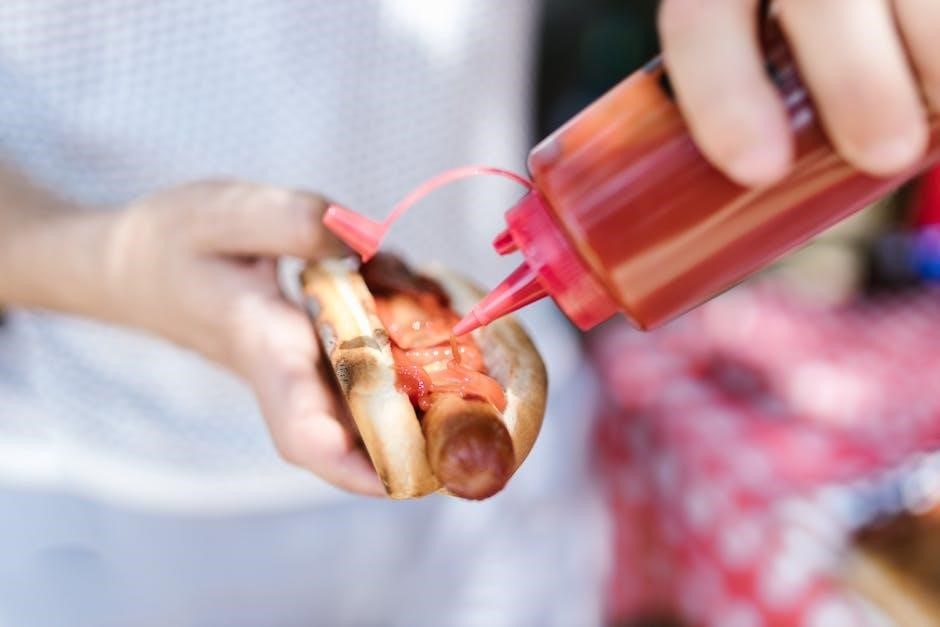
Popular Outdoor Kitchen Configurations
Outdoor kitchens come in versatile layouts, including straight, L-shape, and U-shape designs. These configurations optimize space and functionality, catering to different backyard sizes and entertaining needs.
3.1 Straight Layout
The straight layout is a minimalist design, ideal for smaller spaces. It features a linear arrangement of appliances and countertops, maximizing efficiency while keeping the workflow streamlined. This configuration is perfect for narrow backyards or patios, offering a practical solution for compact outdoor cooking areas without compromising functionality.
3.2 L-Shape Layout
The L-shape layout is a popular choice for outdoor kitchens, offering excellent space efficiency and workflow. It fits neatly into corners, providing ample counter and storage space. This design often includes a grill station, prep area, and storage, making it ideal for entertaining; The L-shape creates a natural separation between cooking and social zones, enhancing functionality and aesthetics.
3.3 U-Shape Layout
The U-shape layout wraps around three sides, offering ample counter space and enclosing the cooking area. It’s ideal for larger spaces, providing separate zones for grilling, prep, and cleanup. This design enhances efficiency, allowing easy movement between stations. The U-shape layout is perfect for entertaining, creating a central hub that keeps the cook connected to guests while maintaining a functional workflow.
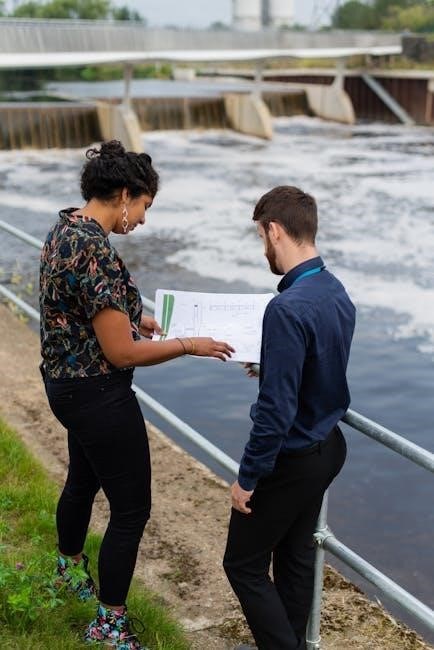
Essential Elements of an Outdoor Kitchen
A well-designed outdoor kitchen includes a grill station, durable countertops, storage solutions, refrigeration, and a sink with plumbing. These elements ensure functionality and durability for outdoor cooking.
4.1 Grill or Cooking Station
The grill or cooking station is the heart of an outdoor kitchen, offering various options like built-in grills, side burners, and pizza ovens. These stations are designed to withstand outdoor conditions, ensuring durability and performance. They often include features like storage for utensils and fuel, making them versatile and practical for different cooking needs.
4.2 Countertops and Storage
Durable, weather-resistant countertops like concrete, granite, or recycled plastic are essential for outdoor kitchens. Ample storage solutions, such as cabinets, shelves, and drawers, keep utensils and supplies organized. These elements ensure functionality and style, while protecting items from the elements, making your outdoor kitchen both practical and visually appealing for years to come.
4.3 Refrigeration and Cooling Zones
Refrigeration and cooling zones are crucial for outdoor kitchens, allowing fresh food storage and convenient beverage access. Outdoor-rated refrigerators, coolers, and ice makers ensure functionality. These zones, often integrated into the design, enhance entertaining by keeping drinks and ingredients chilled. Proper placement near cooking areas streamlines workflow, making your outdoor kitchen both efficient and enjoyable for guests.
4.4 Sink and Plumbing
A sink and proper plumbing are essential for outdoor kitchens, providing a convenient space for food preparation and cleanup. Outdoor-rated sinks and faucets are designed to withstand weather conditions. Plumbing must be installed correctly to ensure functionality and durability, with considerations for water supply, drainage, and winterization to prevent damage from freezing temperatures and harsh elements.

Design Tips for an Outdoor Kitchen
Designing an outdoor kitchen requires balancing functionality and aesthetics. Incorporate hot, cold, and wet zones for efficiency. Optimize traffic flow and ergonomics for a seamless cooking experience. Use durable, weather-resistant materials to ensure longevity and maintain a cohesive design that complements your backyard.
5.1 Incorporating Hot, Cold, and Wet Zones
Organize your outdoor kitchen into zones for efficiency. The hot zone includes grills and cooktops for cooking. The cold zone features refrigerators and coolers for storage. The wet zone includes sinks and prep areas for cleanup. This layout enhances workflow, making cooking and entertaining seamless while keeping each function distinct and accessible.
5.2 Optimizing Traffic Flow and Ergonomics
Design your outdoor kitchen with the golden triangle concept, ensuring the grill, sink, and refrigerator form an efficient workflow. Keep pathways clear to avoid bottlenecks and ensure ample space for movement. Place high-traffic areas, like prep stations, within easy reach to enhance functionality and comfort, creating a seamless cooking and entertaining experience.
5.3 Weather-Resistant Materials
Use durable, weather-resistant materials like stainless steel, natural stone, and concrete for your outdoor kitchen. These options withstand harsh weather conditions, ensuring longevity. Seal surfaces regularly to protect against moisture and UV damage. Incorporate water-resistant fabrics for seating and shade structures to enhance both functionality and aesthetics, creating a space that endures seasons beautifully.

Tools and Materials Needed
Essential tools include a measuring tape, level, and trowel. Durable materials like stainless steel, stone, and concrete ensure longevity. Use grout and sealants for weatherproofing.
6.1 Construction Tools
Essential tools for constructing an outdoor kitchen include a tape measure, level, wheelbarrow, trowel, and caulking gun. Additional tools like stakes, string, and chisel aid in layout and material preparation. Gloves and protective gear ensure safety during construction. Durable materials like concrete and stone require specialized tools for cutting and placement, ensuring a sturdy and long-lasting structure.
6.2 Durable Materials for Outdoor Use
Weather-resistant materials like stone, concrete, and stainless steel are ideal for outdoor kitchens. Natural stone offers durability and aesthetic appeal, while concrete provides versatility. Stainless steel appliances resist corrosion, and weather-resistant wood adds warmth. These materials ensure longevity, withstand harsh weather, and maintain functionality, making them perfect for creating a sturdy and attractive outdoor cooking space.
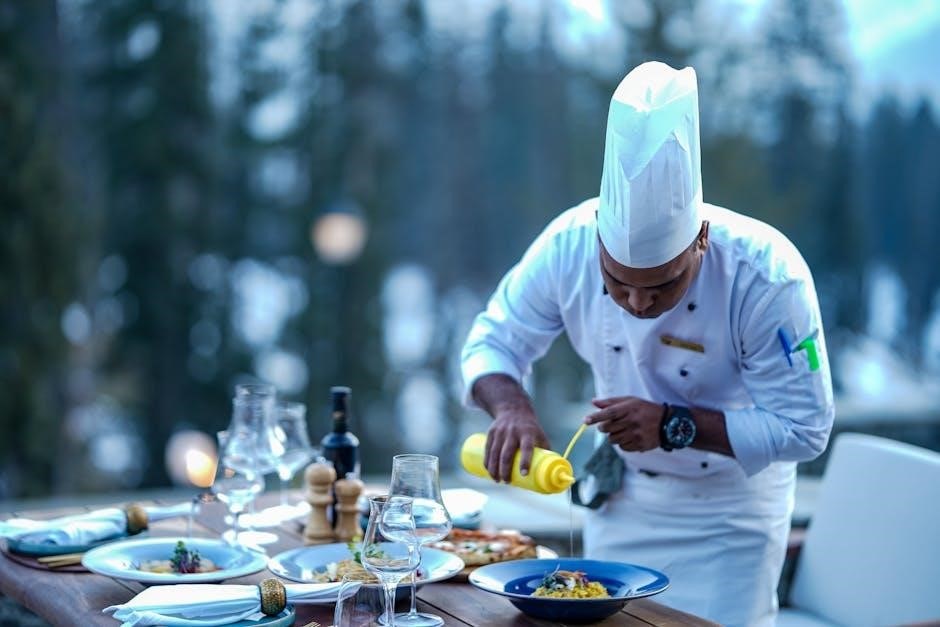
Budgeting for Your Outdoor Kitchen
Estimate costs for appliances, countertops, and installation. Plan your budget according to space and design needs to ensure the project stays affordable and meets your expectations.
7.1 Estimating Costs
Estimating costs involves assessing materials, labor, and appliances. Outdoor kitchens can range from $1,000 for basic setups to $50,000+ for high-end designs. Factors like size, materials, and features significantly impact the total expense. Plan your budget by comparing prices, considering DIY options, and prioritizing essential elements to ensure your project stays within financial limits and meets your expectations.
7.2 Saving Money with DIY Plans
Diy outdoor kitchen plans can significantly reduce costs by eliminating labor expenses. Using free or affordable pdf blueprints, you can design and build your kitchen yourself. Opt for cost-effective materials and repurpose items when possible. Detailed instructions and materials lists help you stay on budget while creating a functional and stylish outdoor space tailored to your needs.

DIY vs. Professional Installation
Choosing between DIY and professional installation depends on your skills and budget. DIY offers cost savings and customization, while professionals provide expertise and superior results.
8.1 Pros and Cons of DIY Projects
DIY outdoor kitchen projects offer cost savings and personal customization but require time, skills, and effort. They can be rewarding but may lead to errors if proper planning and execution aren’t ensured. DIY projects are ideal for those with experience, while novices may face challenges.
8.2 When to Hire a Professional
Hiring a professional is recommended for complex outdoor kitchen designs or when lacking DIY experience. Experts ensure compliance with zoning laws and safety standards, providing high-quality results. They handle intricate elements like plumbing and electrical work, saving time and potential errors for homeowners seeking a polished, functional outdoor space.
Maintenance and Upkeep
Regular cleaning, seasonal inspections, and protective coverings ensure your outdoor kitchen remains functional and durable. Weather-resistant materials and proper storage help withstand harsh conditions year-round.
9.1 Cleaning and Seasonal Maintenance
Regularly clean grills, countertops, and storage areas to prevent dirt buildup. Seasonal checks ensure all components like refrigerators and plumbing function properly. Covering equipment during off-seasons protects from weather damage. Proper maintenance extends the lifespan of your outdoor kitchen, keeping it safe and ready for year-round entertaining.
9.2 Protecting Your Kitchen from the Elements
Shield your outdoor kitchen from rain, sun, and extreme temperatures using weather-resistant materials like stainless steel or natural stone. Install covers for grills and appliances, and ensure proper drainage. Consider adding a pergola or gazebo for shade. Regular inspections and maintenance help prevent damage, ensuring your kitchen remains functional and stylish year-round.
Safety Considerations
Ensure proper ventilation, use weather-resistant materials, and securely store flammable items. Regularly inspect electrical and gas connections to prevent hazards and maintain a safe outdoor cooking environment.
10.1 Fire Safety Tips
Always position grills and fire pits away from flammable materials. Keep a fire extinguisher nearby and ensure it’s easily accessible. Regularly clean grease traps to prevent accidental ignition. Install smoke detectors and ensure proper ventilation to reduce fire risks. Store lighter fluids and matches in a safe, dry location away from heat sources.
10.2 Electrical and Plumbing Safety
Ensure all electrical components are weather-resistant and rated for outdoor use. Install GFCI outlets to protect against ground faults. Avoid overloading circuits and keep wiring concealed. For plumbing, use frost-proof faucets and insulate pipes in colder climates. Regularly inspect connections to prevent leaks and water damage, ensuring your outdoor kitchen remains safe and functional year-round.

Where to Find Outdoor Kitchen Plans
Discover outdoor kitchen blueprints on platforms like Etsy, offering PDF downloads with detailed layouts and instructions. These plans provide customizable designs, materials lists, and step-by-step guides, helping you create your ideal outdoor cooking space efficiently and cost-effectively.
11.1 Free PDF Downloads
Free PDF downloads are an excellent resource for obtaining detailed outdoor kitchen blueprints. Websites like Etsy offer a wide range of downloadable plans, including layouts, material lists, and step-by-step instructions. These PDFs provide cost-effective ways to design and build your outdoor kitchen, ensuring you have a clear guide to bring your project to life successfully.
11.2 Purchasing Detailed Blueprints
Purchasing detailed blueprints for outdoor kitchens offers customizable and professional-grade designs. Websites like Etsy provide a variety of paid plans, including CAD files and PDFs, tailored to specific needs. These blueprints often include precise measurements, material lists, and installation guides, ensuring a polished and functional outdoor kitchen. They are ideal for those seeking expert-level designs and customization options.
Creating an outdoor kitchen is a rewarding project that enhances backyard living. With the right blueprint and careful planning, you can build a functional, stylish space for years of enjoyment. Start your journey with detailed PDF plans and transform your backyard into a culinary retreat for family and friends.
12.1 Final Tips for a Successful Project
Plan meticulously, ensuring your design aligns with your space and budget. Use durable materials and follow safety guidelines. Consider DIY options for cost savings but seek professional help when needed. Regular maintenance will extend the life of your outdoor kitchen. Download detailed PDF blueprints to guide your project and ensure a seamless execution from start to finish.
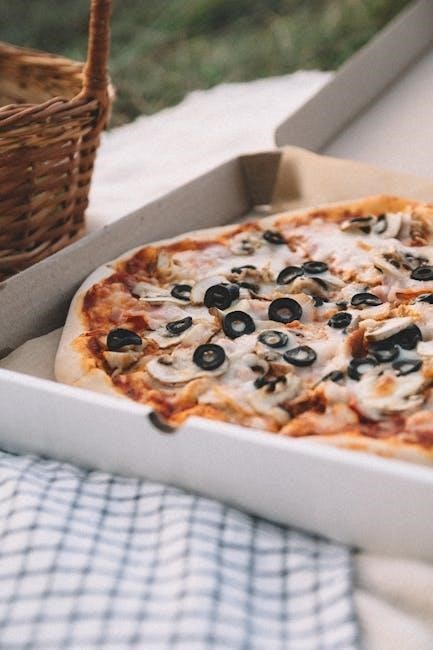
Additional Resources
Explore recommended tools, websites, and expert consultations for detailed blueprint outdoor kitchen plans pdf. Find inspiration and professional guidance to enhance your project successfully.
13.1 Recommended Tools and Websites
Utilize tools like SketchUp for 3D modeling and websites such as DIY Kitchens or Etsy for downloadable blueprint outdoor kitchen plans pdf. These resources offer detailed guides, material lists, and design inspiration to streamline your project. Explore platforms like Fire Magic for expert advice and product selections to ensure a successful outdoor kitchen build.
13.2 Expert Advice and Consultations
Consulting experts ensures your outdoor kitchen project meets your vision. Companies like Fire Magic offer expert guidance from start to finish, aiding in decisions between modular and custom builds. Landscape architects like Cletta blend form and function for innovative designs. Schedule consultations to discuss ideas and turn them into reality with professional insights and tailored solutions.
